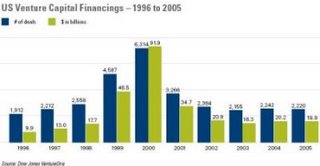--------------------------------------------------------
And now to more important stuff!
It is very tempting to think of India as a third-world country (which it is) that can only provide cheap labor, not just for BPO but also for value-added work like analyzing X-rays or pharma research or tax accounting. In our cost-cutting obsession, however, we may be overlooking what else India may have to offer.
Previously I have talked about tapping into the consumer market that is exploding in India. I have also emphasized the need for innovative business models to target the Indian consumer, but there is another path to participating - through investment into public companies.
As the chart below shows, the Indian stock market (Bombay Stock Exchange index in blue) is at an all-time high. When I plotted it against S&P500 (in red), the first thought that struck me was that for some of you it may already be somewhat late to enter. While I do not expect the market to drop in the near future, I do expect that it will continue to rise at a steady pace for one simple reason - it started from a very small base and only now it has arrived to a point that global investors are taking it seriously. In other words, it still has a huge upside potential though do not expect it to double in less than three years.

So how do you capitalize on some of the emerging areas of growth and maximize your return? How will the current economic policies impact India's growth? These are some of the issues we plan to dwell on during TiECon. And do not forget that this time we are going to have several Indian policymakers at the conference. And while they will get an opportunity to make their pitch on why we should invest in India and their efforts towards further liberalization in the financial and retail sectors, we also will get a chance to impress upon them the changes that we would like to see so that Bombay Stock exchange will be as easy to navigate as New York, London, and Tokyo exchanges are.
What do I recommend?
If you are a sell/buy-side portfolio manager or analyst, investment banker or an economist, TiECon will provide an excellent opportunity to get a first-hand understanding of the capital markets in India. And the session I recommend is the one entitled "Emerging Trends: Cross Border Investing" on June 16 at 0115 PM. And while many attendees find it difficult to attend sessions on Saturday, if you are serious about studying India as a potential investment opportunity, I also recommend that you come just for the "Investing in India" session right after lunch.
Related article: Investment opportunities in India
- Posted by Jay Dwivedi
